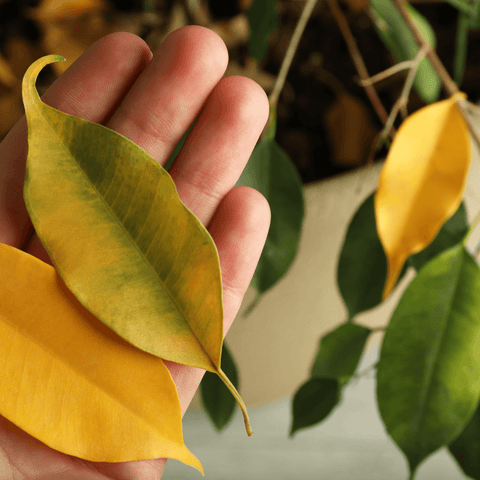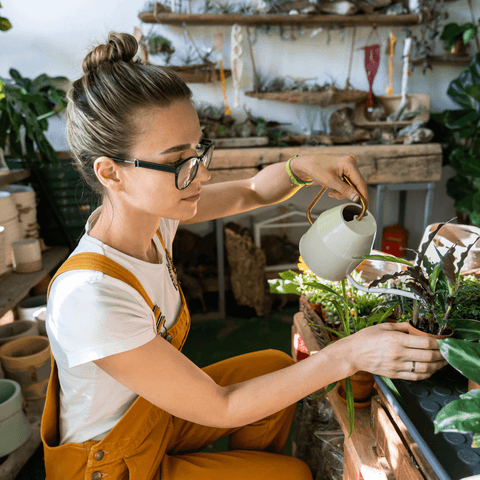Houseplants bring a touch of nature indoors, but what happens when those vibrant green leaves start turning yellow? It can be concerning and puzzling for plant enthusiasts. In this blog post, we will unravel the mystery behind yellowing leaves on houseplants. By understanding the various factors contributing to this common issue, you'll be better equipped to address it and ensure the health and vitality of your green companions.
Overwatering or Underwatering
The most common cause of yellowing leaves in houseplants is improper watering. Overwatering can lead to root rot, causing the leaves to turn yellow, soft, and wilt. Conversely, underwatering deprives plants of essential moisture, resulting in yellowing leaves that may appear dry and crispy. To prevent these issues, it's crucial to find the right balance. Allow the soil to dry out slightly between waterings, and adjust your watering routine based on the specific needs of each plant.
Nutrient Deficiencies
Yellowing leaves can also be a sign of nutrient deficiencies. For healthy growth, plants require a balanced supply of essential nutrients, such as nitrogen, phosphorus, and potassium. When these nutrients are lacking, leaves may turn yellow, starting from the lower leaves and progressing upwards. To address this, consider using a balanced fertilizer formulated for houseplants, following the instructions carefully. In addition, regularly feeding your plants will help ensure they receive the necessary nutrients to maintain vibrant foliage.
Light Levels
Light plays a crucial role in the health and appearance of houseplants. Insufficient light can lead to yellowing leaves as plants struggle to generate energy through photosynthesis. If your plant is not receiving enough light, it may stretch toward the light source, resulting in leggy growth and pale leaves. On the other hand, excessive exposure to direct sunlight can scorch the leaves, causing them to turn yellow or brown. Understanding the light requirements of your specific plants and providing them with appropriate lighting conditions can help prevent yellowing leaves.
Pests and Diseases
Pests and diseases can also contribute to yellowing leaves. Common culprits include aphids, spider mites, mealybugs, and fungal infections. These invaders feed on plant tissues or disrupt their normal functioning, leading to discoloration and damage. Inspect your plants regularly for signs of pests or diseases, such as small insects, webbing, or unusual spots on the leaves. If an infestation is detected, treat it promptly with appropriate measures, such as insecticidal soap or horticultural oils, or consult a professional.
Environmental Stress
Environmental factors can cause stress to houseplants, resulting in yellowing leaves. Extreme temperatures, drafts, sudden changes in humidity, or exposure to chemicals and pollutants can all impact the health of your plants. Additionally, transplant shock after repotting or moving a plant to a new location can cause temporary yellowing. Minimizing environmental stress by providing stable conditions and gradually acclimating plants to new environments can help prevent leaf discoloration.
Yellowing leaves in houseplants are a common concern, but they can be addressed with the proper knowledge and care. By understanding the potential causes, such as improper watering, nutrient deficiencies, light levels, pests and diseases, and environmental stress, you can take proactive measures to maintain healthy foliage.
Regular observation, adjusting watering routines, providing adequate nutrients and lighting, and promptly addressing pest or disease issues are crucial to ensuring the well-being of your houseplants. Remember, a little detective work and timely intervention can restore your plants' lush greenery and keep them thriving.





Comments (0)
There are no comments for this article. Be the first one to leave a message!